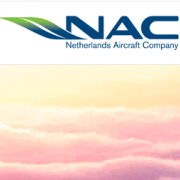


Search
|
Home » Welcome

The Fokker 130 promises to become the benchmark for the market segment:
Lowest fuel burn and Direct Operating Cost per seat and per trip Greenest aircraft with lowest CO2 emission and lowest interior and exterior noise levels The Fokker 130 weight advantage allows the installation of a light engine without compromising performance. It uses an engine type similar to the E175-E2 and MRJ-90, while carrying over 45% more passengers. Operating empty weight The Fokker 130:
Carries 130 passengers at a comfortable 30 inch seat pitch Is lightest in its class Has less wetted area by a five-abreast seating arrangement, resulting in lower drag Is designed for high frequency operations Enhances Pratt & Whitney’s geared turbofan excellent noise performance by its tail-mounted engine position OEW_f130_v2 Durability The Fokker 130 metal bonding techniques and intelligent use of composites are at the base of the lightest and most durable airframe of the industry. These proven techniques result in excellent fatigue life, corrosion resistance and low maintenance cost. It builds on almost 60 years of trouble free experience, gained in multiple aircraft programs, and backed by more than 45 million landings. The Fokker 130 has a crack-free-life of 45,000 cycles and economic repair life of 90,000 cycles. durability-v2 Operating costs The light Fokker 130 airframe allows the use of a lighter, less fuel consuming engine than its direct competition. The Fokker 130 offers the trip cost of a 90-seat jet aircraft and the seat-mile cost of a 145-seat jet aircraft. The result is superior operational flexibility and maximum earning power. The Fokker 130 facilitates hub feed operations, point-to-point thin long routes, route development and right-sizing by exchangeability with 150-seater jets. g4156 The Fokker 130 is optimized for short to medium range flights and high utilization. Excellent hot and high performance makes it versatile. Its 2000 NM maximum range ensures ample operational flexibility. The Fokker 130 range focuses on the flights were money is made. Dimensions Length fuselage 34.79 m Length (overall) 39.00 m Wing span 28.97 m Height (gear extended) 8.49 m Fuselage diameter 3.30 m Wheel base 15.69 m Wheel track 5.04 m Dimensions-F130 Weights STANDARD Range 2,000 NM TOFL 1,915 m LFL 1,520 m MTOW 48,208 kg MZFW 39,753 kg MLW 42,475 kg MTW 48,539 kg Max. structural payload 12,655 kg GENERIC MMO 0.79 Ceiling 37,000 ft Engine Pratt & Whitney PW1x17G Engine type Two shaft geared turbofan engine Max. take-off thrust 16,440 lb APR Thrust 18,248 lb Range Beijing Brasilia Canberra Dubai Frankfurt Jakarta Mumbai Nairobi Washington Beijing The Fokker 130 interior is designed for maximum passenger comfort and well-being. The interior incorporates:
Latest slim seats Adjustable LED lighting Very low interior noise levels due to the tail-mounted engine position The Fokker 130 offers a single class configuration carrying 130 passengers at 30 inch seat pitch. Various alternative layouts are possible, including First or Business Class configurations with a wide four-abreast seating. Modular areas for galleys, lavatories, wardrobes and stowages are available. Interior Blue Seating configuration The Fokker 130 incorporates the latest manufacturing technologies and materials to create a modern and spacious passenger experience. Latest styling and lighting principles increase passenger comfort. F130-FloorPlan The slim seats achieve excellent passenger comfort in a higher density configuration.
At 30 inch seat pitch 130 passengers travel with the comfort of a conventional 32 inch seat pitch configuration The 120 passenger dual class configuration combines 34 inch seat pitch in the 4-abreast business class and 30 inch in the 5-abreast economy class Cross-section The Fokker 130 has asymmetric luggage bins to provide maximum overhead stowage space. Under floor cargo capacity is increased by the fuselage stretch and miniaturization of under floor avionics equipment. The spacious interior dimensions and low cabin noise of the Fokker 130 provide a unique passenger experience that is highly desirable. Cross-713 Service areas The Fokker 130 features modular service areas in the forward and aft passenger cabin. They can be easily (re-)configured according to the needs of the customer. Among these modular units are galleys, wardrobes, lavatories and additional stowage space. Service areas The Fokker 130 benchmark performance is the result of stretching the unsurpassed light-weight Fokker airframe and adding:
New technology Pratt & Whitney Geared Turbofan engines Winglets and aerodynamic improvements Latest technology avionics A phenomenal 30% improvement of seat-mile cost is projected. No current or planned competitor comes close! Avionics The Fokker 130 is designed for operations well into the 21st century, easily adaptable to future Air Traffic Control requirements. The unique Fokker 130 man-machine interface is an ergonomic flight deck design and centered around an optimal presentation of flight data to the pilots, including:
Dark cockpit philosophy minimizing flight crew work load in high-density traffic A logical optimization coming from the Fokker flight deck with its excellent reputation High degree of integration between the various systems e.g. overhead panel included in the flight warning system Full flight envelope protection (“protect- by-wire”) Flight phase adapted warnings Suppression of consequential failures Unique flight mode annunciation Avionics Aerodynamics The winglets reduce fuel consumption by 2 to 3% for a typical flight.
Up to 7% reduction in drag during takeoff Up to 3% reduction in drag during cruise A 1,500 kg extra payload capacity in critical takeoff conditions is realized for operation at high airfields and in high ambient temperatures.
The Fokker 130 is powered by the smallest version of the Pratt & Whitney Geared Turbofan engines. This engine family is based on the concept of:
A reduction gear between the low speed turbine and the fan A very high bypass ratio and a high Overall Pressure Ratio The lowest specific fuel consumption available in a commercial transport engine in this class The Fokker 130 low weight airframe and the smallest version of this engine family are a perfect match. Aero dynamics The Fokker 130 engine nacelle and thrust reverser are of a split-flow type. The latest Computational Fluid Dynamics techniques and wind tunnel testing are used to optimize the air flow through and around the nacelle. A target type thrust reverser is designed for simplicity and reliability. The Fokker 130 builds on the reputation of hundreds of Fokker aircraft flying the world today. The Fokker 130 will:
Be certified to latest EASA and FAA requirements. Have entry-into-service in five years. Be developed in cooperation with renowned Dutch engineering companies, the national aeronautical institutions and international specialists.
|

